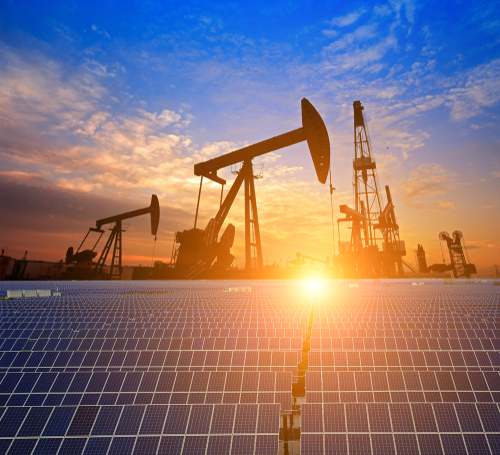Customer demand and agile infrastructure regulation key to US energy future

A panel of energy veterans convened in Washington by the Bipartisan Policy Center on Thursday said the high-stakes balancing act between energy development and environmental protection would continue to complicate the market as it shifts toward renewable energy and exports.
While the United States will be increasingly flush with energy in the coming years, the fickleness of energy consumers and effective infrastructure expansion will be keys to making use of the developing bounty.
“We see a very positive future as energy consumption internally goes down and the opportunities will be in exports,” said Arshad Mansoor, senior vice president of Research and Development at the Electric Power Research Institute.
Mansoor’s observations pertained to a particularly rosy report issued earlier in the day by the U.S. Energy Information Administration (EIA). The EIA’s Annual Energy Outlook 2019 (AEO) predicted that the United States would continue to develop oil and gas resources as well as green energy capacity in an environment that will likely see a surge in “electrification” to accommodate new technologies, such as electric vehicles.
“The AEO highlights the increasing role of renewable energy in the U.S. generation mix,” EIA Administrator Linda Capuano said in a written statement. “Solar and wind generation are driving much of the growth; in fact, our reference case projects that renewables will grow to become a larger share of U.S. electric generation than nuclear and coal in less than a decade.”
The projections were a positive development in what has been a fairly gloomy period in news about climate change that has featured increased calls to move away from oil and coal, and toward the sunlight and wind. The report projected that renewable energy, including hydroelectric, would grow from 18 percent of the current U.S. fuel supply to 31 percent by 2050. Natural gas will increase from 34 percent to 35 percent in the same period while coal and nuclear trendlines sag and then flatten out.
Panelists, however, reminded the Washington audience that much of the increase in natural gas supply was linked to increased crude oil production; the gas comes out of the ground along with the oil and can either be flared off or shipped by pipeline to a downstream power plant or even converted to liquefied natural gas and shipped overseas by tanker.
The seemingly simple arrangement can run into a thicket of regulation regarding the construction of pipelines, seaports, and even emissions from the flaring itself. It is a fact of life that regulators say needs to be streamlined.
“It doesn’t mean no regulation, but the proper amount of regulation that allows the market to control what occurs,” said Colette Honorable, a partner at Reed Smith LLP, and former FERC commissioner nominated by President Barack Obama in 2014. “Clearly, there is a role in market design development that is not static and sometimes not graceful.”
The bureaucratic clumsiness was portrayed as the need for better coordination among federal regulators, such as FERC, and state agencies that have their own political and environmental priorities on top of their energy needs. That lack of coordination, Honorable said, leads to delays in getting pipelines and power lines built where they are needed to exploit new gas and renewable power resources.
“We will continue to see them (delays) until we get better coordination on both sides.” she said. “There have been a number of studies that have gone on longer than they should, and that means transmission lines come on later than they should. And now we’re starting to see a lack of coordination on interstate pipelines.”
The expansion of renewable energy and natural gas usage is a nationwide phenomenon, but fragmented markets and shifting political winds coupled with unknown customer demand means the future U.S. energy picture is not set in stone. The true scope of energy demand on the road ahead will be affected by still-vague factors. But the panel agreed that whatever happens, the right pipelines and power lines will need to be in the right place at the right time.
Honorable said the nation was “absolutely moving in the right direction by integrating more renewables.”
“But,” she added, “infrastructure is the key and that requires a lot of work.”
